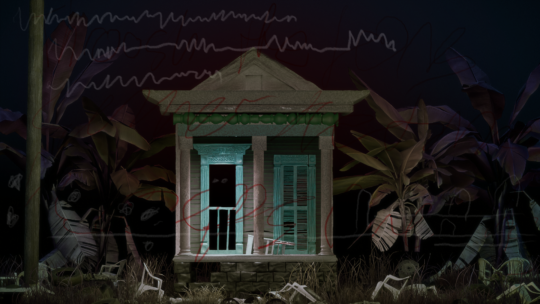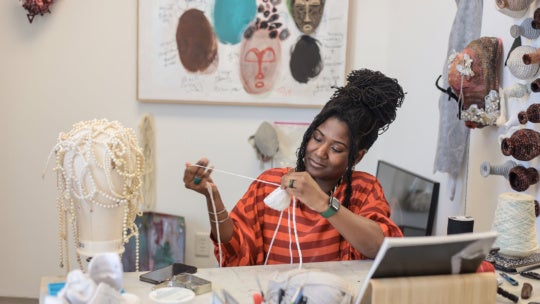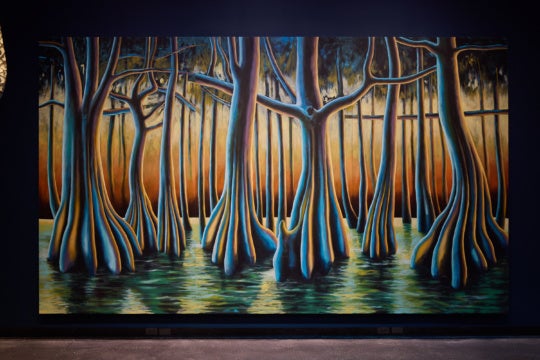
June 11, 2013
Field Report by Pam Longobardi
Our final leg of the journey was a joint venture between the National Park Service at Kamai National Park and the GYRE Expedition. Katmai is a nearly 500 million acre park that is a preserve for the Alaskan brown bear—the largest bears on earth—a close relative but a separate sub-species from the grizzly bear. They are beach bears that grow enormous on a fish and plant-based diet of clams, salmon, sedge grass and blueberries. Two bays down is the location of Timothy Treadwell’s lifework of bear observation and activism, the subject of (my favorite director) Werner Herzog’s film Grizzly Man. This is remote territory accessible only by plane or boat, and it, too, was jammed with plastic.
From a half-mile offshore as we approach the enormous five-mile beach, we can see orange dots studding the shore. These are the bagged trash piles of plastic garbage that six National Park Rangers collected in a three-day period. It turned out to be over two tons of (primarily) nets, hard plastic, styrofoam floats, and umpteen million product bottles. We did a boat relay between the Jubatus—our 23-foot steel landing skiff—and the Achilles inflatable, with the land-based crew, sweeping along the five-mile stretch from pile to pile and then passing down the beach to the boats. The boats then shuttled the loads to our 108 foot former crabbing-ship-made-luxury-
The bears were all around us, sometimes surprising us by suddenly appearing from around a rock ledge. One sub-adult revealed himself this way, very jittery and nervous, spending his first summer alone after his mother’s abrupt banishment to grow up on his own. He was pushing a mother and cubs along the beach, making her very nervous. Males will sometimes eat the cubs.

We continued to pick up more plastic and observe the bears. With us were three rangers and Park Superintendent Diane Chong, who is in charge of the five-million acre park. The bears were clamming in the mudflats. A mother bear decides to approach us, and she plods directly for us along a huge log into our midst, not 12 feet away with her three precious weeks-old cubs. The cubs are curious, standing on hind legs, tumbling over one another, climbing on her back. The mother bear lays down, clearly relaxed, comfortable, and blinky in the warm sun, with the mouth-half-open expression of a happy dog. She approached us on her terms, not seeing us as a threat, but as company, and a place to feel safer from the sub-adult male that we had seen pressuring her to chase up the beach. It was a sublime moment that left many of us with tears streaming—sharing space with an 800 lb. Alaskan brown bear, at her choice. It seemed we were given back a rare and magical gift of interspecies connection as acknowledgement or thanks for our work.
Onboard the ship is the portable research lab of Smithsonian materials scientist Odile Madden. We bring her samples and she scans them with an electron spectroscope for molecular content revealing plastic type, surface contaminants and heavy metals. Some of the asian fishing floats show the presence of lead. Nick Mallos of Ocean Conservancy is collecting bottle caps (numbering in the thousands) to survey the branding prevalence. The oddest bottles I have found are from Thailand, the Philippines and Russia. The brilliant Carl Safina is writing furiously, weaving together the complex thoughts with his astute and researched, yet heart-felt observations.

Mark [Dion] and I have been collecting floats. We started drawing them onboard in order to identify the types: gill net, drift net, bullet-nosed crab pot floats, and the creepy giant black oval floats from the [2011] Japan tsunami. These [floats] are part of the Japanese oyster aquaculture industry; In Hawaii, I collected tens of thousands of the blackish tubes to build the Broken Molecule for the Hudgens show. Mark is designing a cabinet to house his collection. He also nearly fills an entire sketchbook, writing, drawing and listing the animals and the 60 bird species he logged on pages every day. JJ [Kelly] and Josh [Thomas], the Nat Geo filmographers and photographer Kip [Evans] work 16 hour days shooting and filming by day, downloading and editing by night. None of us sleeps much as the preternatural sunscape here makes a day that begins at 4:00am is still bright daylight at 1:00am, and we have 6:30am briefings. Expedition leader Howard Ferren sets a blistering pace.

The art-science-activism triangulation of this expedition is an experiment in transformational possibility and new forms of artistic research that Julie Decker, chief curator at the Anchorage Museum will be forming into an exhibition opening at the museum in 2014 and traveling. It’s one hope of the expedition to pose a model for cooperation, creative problem solving, and inspiration to action. Plastic production and waste may be the most important issue facing humans right now because it is the hidden part of every other problem: global warming, depleted oil reserves, offshore drilling, rampant consumption, wasted resources, ocean poisoning, food toxification. It is so entangled in all our present challenges that we need every partner at the table: artists, scientists, policy makers, educators, activists, children, adults, politicians, consumers, everyone—because none of us are guilt-free. Art has a important role to play in communicating the visual, intellectual and emotional message about the world we are now entering in the Anthropocene—the new geologic era marked by human change to the physical earth.

House rules for commenting:
1. Please use a full first name. We do not support hiding behind anonymity.
2. All comments on BURNAWAY are moderated. Please be patient—we’ll do our best to keep up, but sometimes it may take us a bit to get to all of them.
3. BURNAWAY reserves the right to refuse or reject comments.
4. We support critically engaged arguments (both positive and negative), but please don’t be a jerk, ok? Comments should never be personally offensive in nature.




